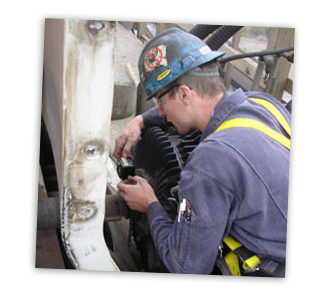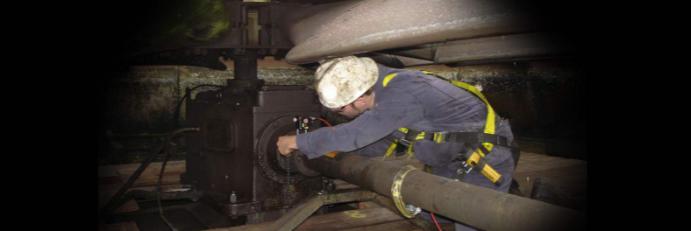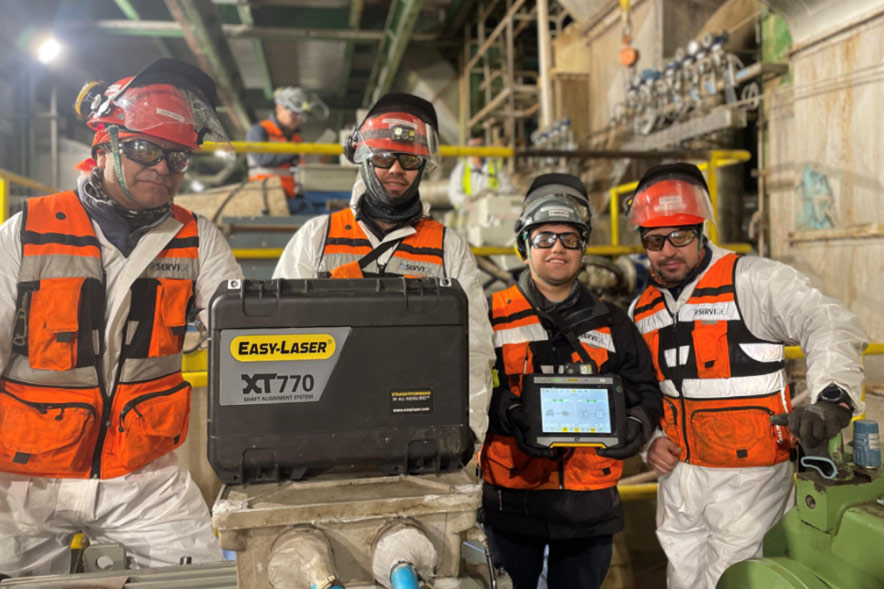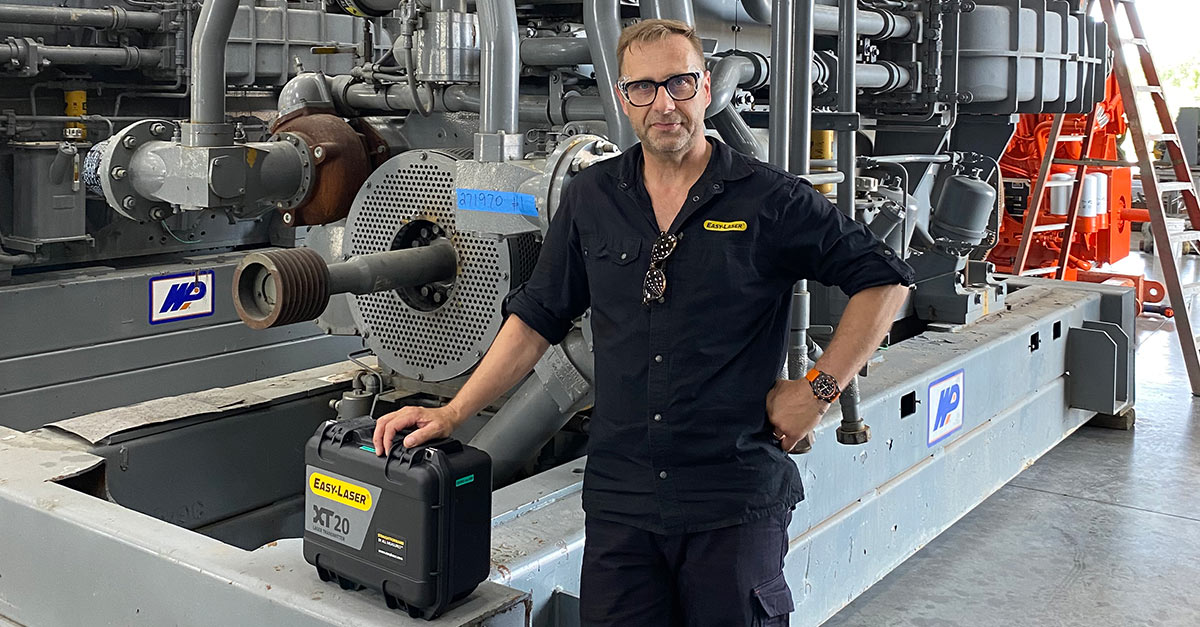One example is Lake Erie Steel, a large steel mill in Nanticoke, Ontario, who recently purchased an Easy-Laser®, dual beam, shaft alignment system. This system gives them the ability to align the 14 foot long jackshafts on their water cooling towers. Spanning the 14 feet coupling to coupling is not a problem for the Easy-Laser system, that is capable of shaft alignment over a distance of 60 feet. In the past a contractor had done this work using a single beam system that could not span the required distance of 15 feet from the motor to gearbox. The procedure for this type of system had been to measure alignment at each coupling on either end of the jackshaft and then use both sets of alignment results to calculate the necessary correction in order to align the machine units.
 Performing the alignment
Performing the alignment
With the Easy-Laser system, Lake Erie’s Industrial Mechanic Cliff Dosser, and his crew of apprentices and coop students, who work in the Hot Strip Mill Pump Zone, were now able to start the alignment of a jackshaft by mounting one laser/detector on the motor shaft and the other on the gearbox shaft thereby doing true shaft-to-shaft alignment that was not possible before. Then by simply using the laser beams, which were centered in the closed target at the 9 o’clock position, the shaft was then rotated to the 3 o’clock position. This is a very quick and easy procedure that is used when doing rough alignment for jackshafts. It determines immediately if the machine is out of alignment and the proper movements for correction. In this case it showed that the alignment was grossly out, so corrective action began.
Now with the laser target doors open, measurements were recorded in as little as 40 degrees of shaft rotation. The display showed real time readings in both the horizontal and vertical planes for the moveable machine.
The moveable machine is usually the motor, however it is possible to change the configuration of the machine in the laser display if the driven (gearbox) unit is to be moved or even a combination of different machine feet. The trick is in choosing the correction that requires the least amount of movement. Now all that was needed was to re-position the machine but the real skill was in controlling the movement. At a distance of 15 feet you don’t bump anything; it’s a gradual move which is best done with jacking bolts. The work was completed and unit was put back in service. Cliff took an initial amperage reading on the unit before the re-alignment and it was found to be 174 amps. After the work was completed another reading was taken showing 155 amps. That’s a whopping 19 amp drop!
The result: Large energy savings
Although Lake Erie Steel is running almost 24/7 it was estimated that the cooling tower ran half the year as it is not required in the winter months. That equates to 4,380 running hours, so a 19 amp drop works out to a little over 10% in energy reduction which would be 78,735 Kilowatt hours saved. Using the average of 0.07 cents per KW, a savings of $5,511.44 per year is realized.
WOW! I think Cliff and his crew should be quite pleased with themselves as they look at their success in yet another way. They have not only reduced the plant’s overall carbon footprint by reducing energy that relates to 54 metric tons of CO2, or the equivalent of 8.2 cars off the road, but they have also done an excellent job of re-aligning the motor and gearbox which means that, barring unforeseen circumstances, the plant will get the optimum life out of the cooling tower drive. I’d say that was a good days work wouldn’t you?



